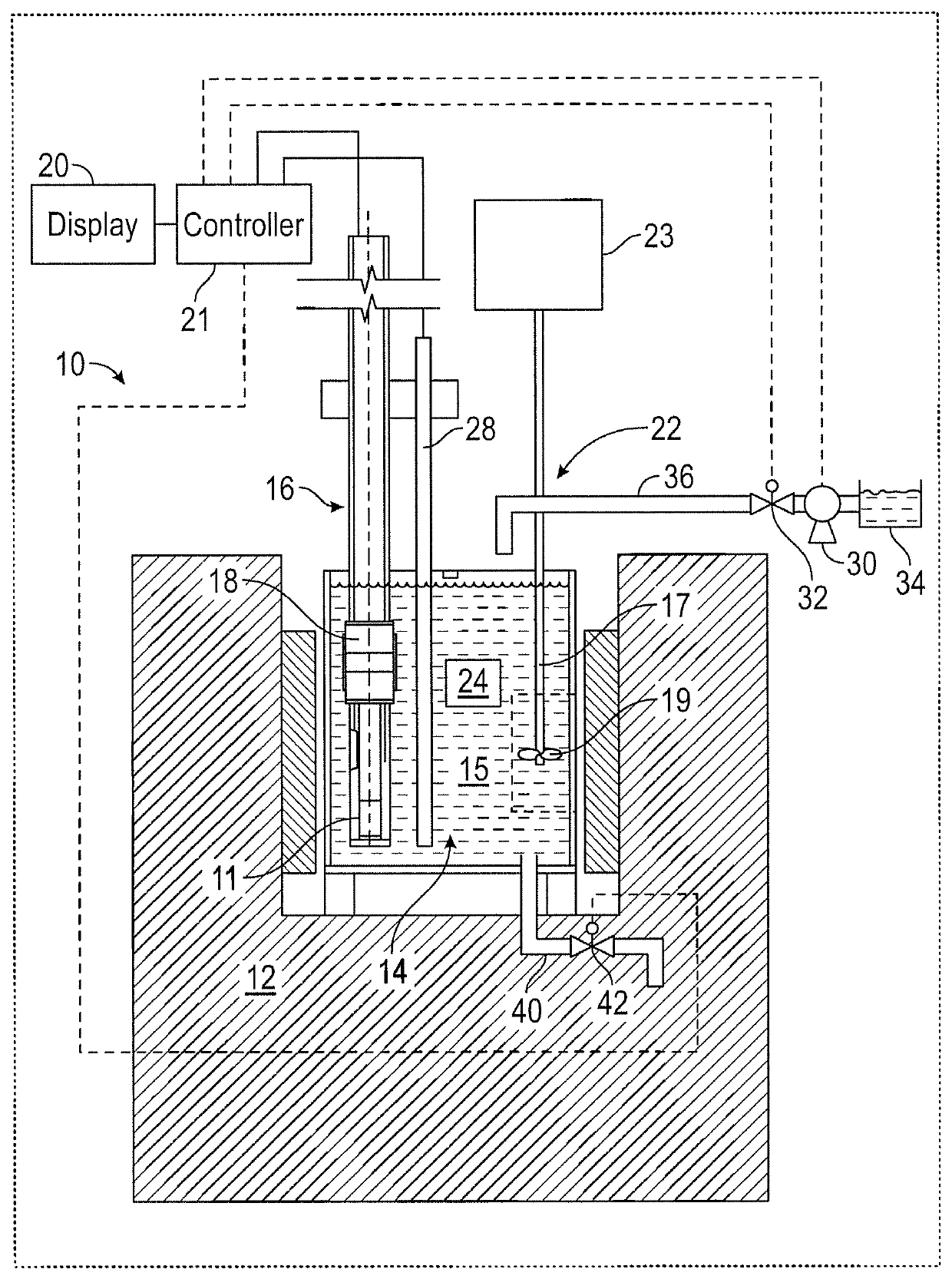Method for measuring and continuously monitoring the heat transfer characteristics of a fluid in a system
a technology of heat transfer characteristics and fluids, which is applied in the field of measuring and continuously monitoring the heat transfer characteristics of fluids in systems, can solve the problems of change in time-temperature profiles, microstructure and physical properties of quenched parts, and achieve the effect of effective heat transfer
- Summary
- Abstract
- Description
- Claims
- Application Information
AI Technical Summary
Benefits of technology
Problems solved by technology
Method used
Image
Examples
Embodiment Construction
[0010]Apparatus 10 includes a quenching station 12, wherein a quenching vessel 14 may be situated. The quenching vessel contains a sufficient volume of a suitable quenching fluid 15. The fluid is understood to be either a liquid or a gas, depending upon the quenching process needed to impart the desired properties into the quenched product 24.
[0011]The quenching fluid or quench medium can be a liquid such as water, brine, molten salt (e.g., sodium nitrate, sodium nitride, etc.), a mineral oil, or a vegetable oil. In some cases, mixtures of these and other liquids may be used. The quenching fluid or quench medium can also be a gas such as air, nitrogen or a nobel gas (e.g., helium, neon, argon, radon, krypton, xenon). In some cases, mixtures of these and other gases may be used.
[0012]The apparatus includes a probe body 16 and a heating element 18 in thermal communication with the probe body. Heating element 18 can be configured to have a fixed or varied input of energy and may be pla...
PUM
| Property | Measurement | Unit |
|---|---|---|
| temperature | aaaaa | aaaaa |
| temperature | aaaaa | aaaaa |
| temperature | aaaaa | aaaaa |
Abstract
Description
Claims
Application Information
 Login to View More
Login to View More - R&D
- Intellectual Property
- Life Sciences
- Materials
- Tech Scout
- Unparalleled Data Quality
- Higher Quality Content
- 60% Fewer Hallucinations
Browse by: Latest US Patents, China's latest patents, Technical Efficacy Thesaurus, Application Domain, Technology Topic, Popular Technical Reports.
© 2025 PatSnap. All rights reserved.Legal|Privacy policy|Modern Slavery Act Transparency Statement|Sitemap|About US| Contact US: help@patsnap.com

